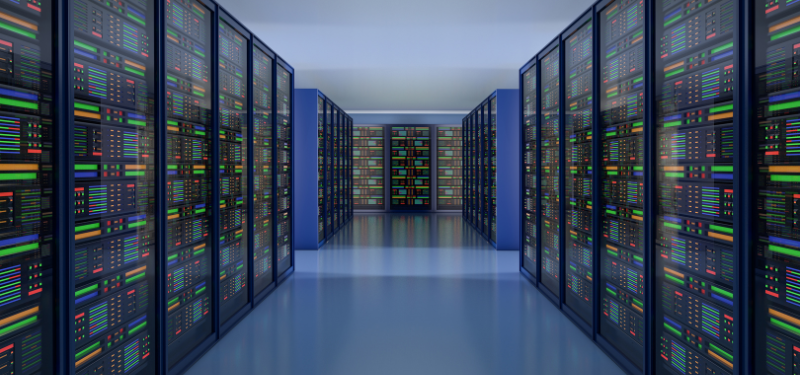
Legacy systems are old, outdated systems or applications. They were built with obsolete technologies and according to dated software development techniques.
Such systems are still used by many organizations, especially those that have been around for a long time now. Examples include databases, permitting & licensing systems, and financial systems.
They are not easily replaced due to the scope of tasks they perform as well as their key functions and complicated structure that has been expanded throughout the years.
Software vendors constantly improve their products and release new versions. With time, they stop developing their older versions, so they lack technical support. As a result, outdated software can’t tackle arising challenges, particularly in terms of data processing, management, and safety.

Legacy systems – should you replace or integrate them?
As technology advances, legacy systems will become obsolete. They won’t be able to be integrated with newer solutions resulting in the inaccessibility of vast amounts of data.
So it’s best to replace a legacy system with a new one, right?
The answer isn’t so obvious! Moving onto a brand new system may be too much of a hassle and even more of an investment. Replacement requires time, adjustments, and the right skills of a migration team.
Then what should you do?
The fastest and possibly best solution is integrating a legacy system with a new product using a data integration platform. FME is an example of such a platform.
Thanks to specialized tools like FME, you don’t have to dedicate much effort, time, and money to move entire systems to the new technologies. At the same time, data integration platforms ensure that your system answers the needs of modern businesses.
Why are legacy systems still around?
As we already established, legacy systems are a barrier to growth. Research shows that nearly 90% of companies are experiencing a lack of growth and efficiency due to outdated technology. Many IT professionals point to legacy systems as the main barrier to digital transformation.
Then why do we keep on using them?
There are several reasons but they don’t have to all occur together. Let’s take a closer look:

Replacing a legacy system might be considered too costly, especially in case the legacy system in place still hasn’t returned its investment. Companies might not be ready for a large upfront investment related to upgrading or replacing the entire system.
A system upgrade always takes quite a bit of time. It might be a long process for more developed, complicated solutions. During the upgrade, there will be downtime; the system won’t work properly and many business processes will be stopped.
Although outdated systems may not meet the needs of modern businesses, many companies develop a dependency on their software.
Since legacy systems have been around for a long time, employees are used to them and know them well. This may result in hesitation and resistance to change, even if the new solution is supposed to bring significant improvements.
A system replacement and data migration require multiple employees with advanced IT, data, and software skills. They need to plan and perform the transition from a legacy system.
Companies may lack employees with the right skills and hiring a team of professionals is related to high costs.
It’s not the end of the problems – employees still need to be trained to use the new system. It will take them some time to get to know it and become proficient. Until then, company operations will be less effective than usual.
A new system may not meet all of the technical specifications of the legacy system. This is mostly related to the compatibility with other technologies and devices used at the company, so they may become useless after the system replacement. This would generate the need for more replacements and bring additional costs.
What are the risks of using legacy systems?
As mentioned before, replacing legacy systems is related to much inconvenience. However, the risks far outweigh the benefits of keeping an outdated system.
Let’s see what are the consequences of resigning from a system replacement or upgrade:
From the business point of view, this is the most important argument for replacing your system. Every company needs solutions that not only meet their business needs but also follow changes in the market and allow them to provide better services.
The service quality is also crucial for meeting client requirements. If a company isn’t on the same technological level as its clients, it cannot compete with more advanced organizations.

Older systems cannot integrate with newer ones. They also fail to support more recent file formats.
As a result, companies are unable to fully use the potential of their data.
Modern systems allow you to access all data and provide options for collecting and analyzing huge amounts of information in real time.
This is beyond the capabilities of a legacy system. Handling lots of data with different formats slows them down and decreases their efficiency.
Newer systems with maintained support are prepared to handle security threats and comply with different laws, e.g. the GDPR.
Legacy systems lack continuous development and can’t keep up with compliance requirements and arising security threats. Dealing with those may be costly and difficult even for the most experienced programmers.

Outdated systems are naturally inflexible and lack scalability. They can’t keep on growing and developing at the same pace as your company or industry to meet new business requirements.
Legacy systems were built according to outdated standards, so maintaining them is laborious and costly. Costs are also related to the fact that each year, fewer employees specialize in older technologies. Rates for work in niche technologies grow, too.
Other issues mentioned earlier, such as losing competitive advantage, problems with using data, lack of security, etc., also bring higher costs. Additionally, every time a legacy system is updated, it has to be shut down. This halts many processes and decreases productivity.
Legacy system integration using FME
During legacy system integration, it might be challenging to connect to the outdated system and complete migration while maintaining data security. Thanks to data integration and processing tools such as FME, these issues cause no trouble.
The FME team equipped their Platform with functions that improve and speed up the process of the legacy system integration as well as data quality maintenance. Here are a few of them:

FME can connect with a legacy system directly via an API or a database, or through a secondary format.
If you need to connect to a database with a JDBC driver, FME has you covered.
The Platform can also work with REST APIs to access services without support for traditional readers and writers. All of this is possible without needing to code.
FME also helps to improve the quality of the data migrated to a new system. In case errors appear during the migration, some of them can be fixed immediately, and FME will alert users about any problems.
One of the most important FME functions related to migrating data to a new system is schema mapping. Every dataset has a defined schema. Datasets are stored according to a particular structure (schema). Schemas are defined by attribute names and types.
Let’s take a look at this example:
You might have a dataset with three fields:
- First name,
- Last name,
- Location.
The first two fields (First and Last Name) have the string data type, whereas the Location field holds the geometry data type. Together, these two pieces of information create a dataset schema (here it is string-string-geometry).
Schema mapping is an option for transforming a dataset so that it matches the target format.
Here’s another example – your new system might require you to store data as only two fields: Full Name and Address. FME can transform the original fields so that they match the new format. This truly facilitates your work in the case of datasets with thousands of columns!

Summary
Perhaps you also own a legacy system and consider changing it. Even though it’s a quite complex process and it’s worth planning and thinking through, keeping your old system is surely a solution to avoid.
It won’t only prevent your company from growing; it also brings a real risk to your industry position.
Moreover, it’s a serious data security threat that’s non-viable, also from the financial perspective.
You can learn more about the data integration platform, FME, from our website.
Do you have a legacy system that isn’t doing its job anymore? Do you consider changing it but don’t know where to start?
Contact us to talk about your challenges and needs – together we can pick the best solution for your company.











